Publication 505 - Tax Withholding And Estimated Tax Page 35
ADVERTISEMENT
withheld from your spouse’s income. However,
was withheld during 2001. On his return for the
Example 3.3. James and Evelyn Brown
different rules may apply if you live in a commu-
fiscal year ending June 30, 2002, he cannot take
made joint estimated tax payments for 2001
nity property state.
credit any tax withheld during 2002.
totaling $3,000. They file separate Forms 1040.
James’ tax is $4,000 and Evelyn’s is $1,000. If
On his return for the fiscal year ending June
Community property states. The following
they do not agree on how to divide the $3,000,
30, 2003, Miles takes credit for any income tax
are community property states.
they must divide it proportionately between their
withheld in 2002.
•
returns. Because James’ tax ($4,000) is 80% of
Arizona,
the total tax ($5,000) due for both of them, his
Backup withholding. If income tax has been
•
California,
share of the estimated tax is $2,400 (80% of
withheld under the backup withholding rule, take
•
$3,000). The balance, $600 (20% of $3,000), is
Idaho,
credit for it on your tax return for the fiscal year in
Evelyn’s share.
which you received the payment.
•
Louisiana,
•
Divorced Taxpayers
Example 3.2. Emily Smith’s records show
Nevada,
that she received income in February 2002 from
•
New Mexico,
If you made joint estimated tax payments for
which $50 was withheld under the backup with-
•
2001, and you were divorced during the year,
holding rule. On her tax return for the fiscal year
Texas,
either you or your former spouse can claim all of
ending June 30, 2002, Emily takes credit for
•
Washington, and
the joint payments, or you each can claim part of
withheld income tax of $50.
•
them. If you cannot agree on how to divide the
Wisconsin.
payments, you must divide them in proportion to
If you live in a community property state and file
each spouse’s individual tax as shown on your
a separate return, you and your spouse must
Estimated Tax
separate returns for 2001. See Example 3.3,
each report half of all community income in addi-
earlier.
tion to your own separate income. Each of you
If you claim any of the joint payments on your
Take credit for all your estimated tax payments
takes credit for half of all taxes withheld on the
tax return, enter your former spouse’s social
for 2001 on line 60 of Form 1040 or line 38 of
community income. If you were divorced during
security number (SSN) in the space provided on
Form 1040A. Include any overpayment from
the year, each of you generally must report half
the front of Form 1040 or Form 1040A. If you
2000 that you had credited to your 2001 esti-
the community income and can take credit for
divorced and remarried in 2001, enter your pre-
mated tax. You must use Form 1040 or Form
half the withholding on that community income
sent spouse’s SSN in that space and write your
1040A if you paid estimated tax. You cannot use
for the period before the divorce.
former spouse’s SSN, followed by “DIV,” to the
Form 1040EZ.
left of line 60, Form 1040, or line 38, Form
For more information on these rules, and
If you were a beneficiary of an estate or trust,
1040A.
some exceptions, see Publication 555, Commu-
include on line 60, Form 1040, any trust pay-
nity Property.
ments of estimated tax credited to you (from line
14a of Schedule K – 1 (Form 1041),
Fiscal Years
Beneficiary’s Share of Income, Deductions,
Excess Social Security
Credits, Etc.). On the dotted line next to line 36
If you file your tax return on the basis of a fiscal
of Schedule E (Form 1040) write “ES payment
or Railroad Retirement
year (a 12-month period ending on the last day
claimed” and the amount. Do not include this
of any month except December), you must fol-
Tax Withholding
amount in the total on line 36. The payment is
low special rules, described below, to determine
treated as being made by you on January 15,
your credit for federal income tax withholding.
2002.
Most employers must withhold social security
tax from your wages. The federal government
Normal withholding. During your fiscal year,
Name changed. If you changed your name,
and state and local governments in some cases
one calendar year will end and another will be-
and you made estimated tax payments using
do not have to withhold social security tax from
gin. You can claim credit on your tax return only
your old name, attach a brief statement to the
their employees’ wages. If you work for a rail-
for the tax withheld during the calendar year
front of your tax return indicating:
road employer, that employer must withhold tier
ending in your fiscal year. You cannot claim
•
1 railroad retirement (RRTA) tax and tier 2
credit for any of the tax withheld during the
When you made the payments,
RRTA tax.
calendar year beginning in your fiscal year. You
•
The amount of each payment,
will be able to claim credit for that withholding on
Two or more employers. If you worked for
•
your return for next year.
Which IRS address you sent the payments
two or more employers in 2001, too much social
The Form W – 2 or 1099 – R you receive for
to,
security tax or RRTA tax may have been with-
the calendar year that ends during your fiscal
•
held from your pay. You may be able to claim the
Your name when you made the payments,
year will show the tax withheld and the income
excess as a credit against your income tax when
and
you received during that calendar year.
you file your return. Table 3.1 shows the maxi-
•
Although you take credit for all the withheld
Your social security number.
mum amount that should have been withheld for
tax shown on the form, report only the part of the
any of these taxes for 2001. Figure the excess
The statement should cover payments you
income shown on the form that you received
withholding on the appropriate worksheet fol-
made jointly with your spouse as well as any you
during your fiscal year. Add to that the income
lowing Table 3.1. Use Worksheet 1 to figure
made separately.
you received during the rest of your fiscal year.
excess social security tax; use Worksheet 2 to
figure excess tier 1 RRTA tax; use Worksheet 3
Separate Returns
Example 3.1. Miles Hanson files his return
to figure excess tier 2 RRTA tax.
for a fiscal year ending June 30. In January
If you and your spouse made separate esti-
2002, he received a Form W – 2 that showed that
Note: If you worked for both a railroad em-
mated tax payments for 2001 and you file sepa-
his wages for 2001 were $15,600 and that his
ployer and a nonrailroad employer, use Work-
rate returns, you can take credit only for your
income tax withheld was $1,409.40. His records
sheet 2 to figure excess social security and tier 1
own payments.
show that he had received $7,500 of the wages
RRTA tax.
by June 30, 2001, and $8,100 from July 1
If you made joint estimated tax payments,
through December 31, 2001.
you must decide how to divide the payments
Joint returns. If you are filing a joint return,
On his return for the fiscal year ending June
between your returns. One of you can claim all
you cannot add any social security or RRTA tax
30, 2002, Miles will report the $8,100 he was
of the estimated tax paid and the other none, or
withheld from your spouse’s income to the
paid in July through December of 2001, plus
you can divide it in any other way you agree on.
amount withheld from your income. You must
whatever he was paid during the rest of the fiscal
If you cannot agree, you must divide the pay-
figure the excess separately for both you and
year — January 1, 2002, to June 30, 2002.
ments in proportion to each spouse’s individual
your spouse to determine if either of you has
However, he takes credit for all $1,409.40 that
tax as shown on your separate returns for 2000.
excess withholding.
Chapter 3 Credit for Withholding and Estimated Tax for 2001
Page 35
ADVERTISEMENT
0 votes
Related Articles
Related forms
Related Categories
Parent category: Financial
 1
1 2
2 3
3 4
4 5
5 6
6 7
7 8
8 9
9 10
10 11
11 12
12 13
13 14
14 15
15 16
16 17
17 18
18 19
19 20
20 21
21 22
22 23
23 24
24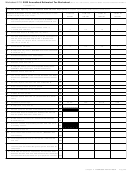 25
25 26
26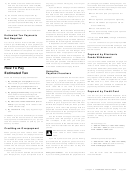 27
27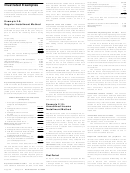 28
28 29
29 30
30 31
31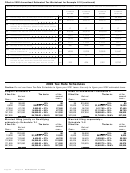 32
32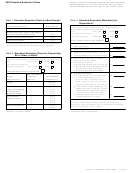 33
33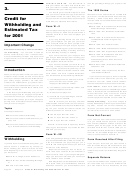 34
34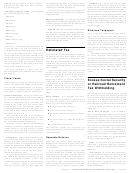 35
35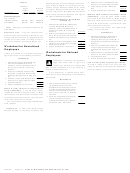 36
36 37
37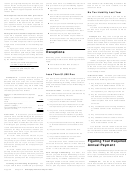 38
38 39
39 40
40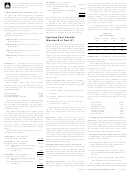 41
41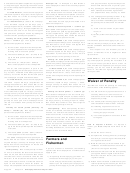 42
42 43
43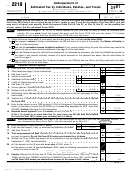 44
44 45
45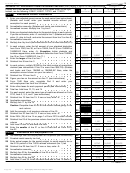 46
46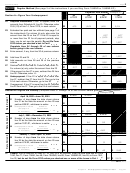 47
47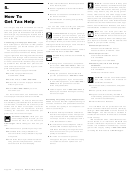 48
48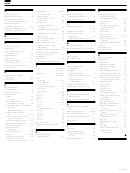 49
49








